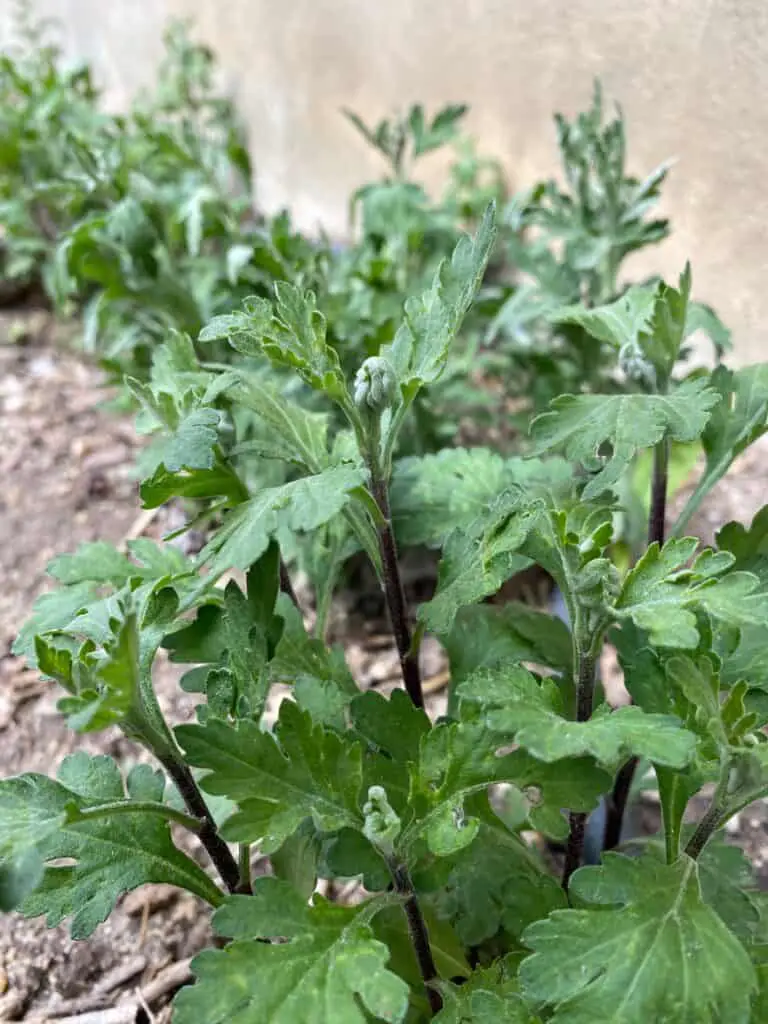The glorious flower of Fall.
We love Chrysanthemums (mums) on our homestead. This article provides a guide to help you grow the wonderful flowers that brighten our lives on Memorial Day and in the autumn.
The How-to’s
In late summer when other plants have called it quits, mums (sure glad they shortened the name) hit their stride. Like poinsettias, they are photoperiodic, meaning that they rely on specific amounts of light to send the signal that it’s time to start putting on the show. That is also the secret that nurserymen have employed to get the mums to show their glory at the end of May.
Mums are easy. Just give them a plot of ground, some fertilizer, and water to wet their thirst, and they will reward you with fantastic color, size, and that ever familiar smell which signals fall, harvest, and football.
But what happens to those hard-working plants that decorate the cemeteries at the end of May? Well if you are frugal (like we are at this homestead) you go out and gather them up before they get thrown away and bring them home. Water them well and leave the blooms on until you have them placed where you want them to grow. This will show you the possibilities for fall with your kaleidoscope of colors.
Place the plants where they will get plenty of sun, plenty of water and have friendly neighbors. Dig a hole bigger than the size of the container, lift the plant out of the pot, score down the sides of the root ball to allow the roots to spread, put in the hole and water, tamp soil around the plant and pack it down. Keep watered for several weeks.
When all your retrieved plants have been given a home and you have welcomed them to the homestead with instructions as to their jobs, then remove the spent blooms, sprinkle a little fertilizer around the base and be ready for another great production in the fall when they will again do their magic.
Where can I get mums to plant?
Mum plantings can be obtained from any place. Send for them from a nursery, get them from a local distributor, share with a friend.
Mums set their buds in the fall when the dark of night lasts about 10 hours. Blooms follow in about 6 to 10 weeks. Cool nights do not affect the plants. Chilly weather seems to intensify the colors and the blossoms last longer. Only a killing frost will stop the show. But at my house, if I know the frost is coming, I will invite as many of my friends into my house to savor the last of the beauty of fall. In fact, each room seems to have at least one or two vases full of my favorite fall flowers.
Planting the plant
Soil: while mums thrive in just about any soil type, they do benefit from generous helpings of homemade compost. Dig in a spade-full at planting time and top-dress with more. Soil must be well-drained, however, or the plants will rot.
Sunshine: Mums planted in full sun bloom more profusely than those in partial shade. An optimal site receives six to eight hours of direct light.
Water: Shallow-rooted mums dry out quickly. Be sure to water consistently, especially during dry spells and in fall, when plants are storing up energy for winter survival.
Pinching Back: If you don’t like the leggy look (who does?), remove the tips of stems early in the season to encourage branching. Repeat the process every two weeks until mid-July. Mums purchased as annuals in late summer do not require this treatment.
Though technically mums are considered perennials, they are often grown as annuals owing to shallow root systems. They are inclined to heave right out of the ground during winter’s freeze-thaw cycles.
If you live where winter can be frigid, plant early-blooming varieties – they would be more likely to come back the next year.
When winter looms, apply a mulch of crisscrossed evergreen boughs to help plants make it through the cold weather ahead. I use our dried corn stocks to cover the plants. Then in spring the corn stocks are chopped and tilled back into the garden.
Some people plant mums in the mid to late summer, but do consider inviting these little darlings into your garden earlier. This will give their root systems a longer time to get established. You can also give them more to eat and extra pep talks too.

Choose Your Variety
For stopping traffic: The spider mum Senkyo Kenshin stands 3 ½ ft. tall and blooms midseason, with about 27 striking, reddish-bronze blossoms per plant
For brilliant color: Jessica has joyful bright yellow blossoms. This midseason decorative mum is from the Prophets Series.
For double duty: An old favorite, French Vanilla has 3 ½ inch white flowers. Grow in a mixed border or cutting garden.
For cold climates: Mannautumn is an extremely cold-hardy – to zone 3 – decorative cushion mum. It’s only 15 inches tall, with vivid orange-red flowers.
For the vase: Carousel, a purple quill mum, is an elegant cut flower, Huge blossoms measure up to 4 inches across.
Several years ago, horticulturists at the University of Minnesota developed a new chrysanthemum hybrid described as a “hardy shrub mum” Dubbed the My Favorite Series. The robust plants were touted as reliably perennial as far north as zone 3b. They have been marketed under the name of Mammoth Series.
True to their new designation, these oversize mums can measure 2 to 3 feet tall and 4 to 5 feet across by their third season. They have a massive canopy of flowers – up to 5000 – per plant. Monarch butterflies adore these shrubby wonders.
Taking Cuttings from Your Neighbor
If you can’t find the mum you want, but you see it in your neighbor’s yard, perhaps you could ask to get a start from their gorgeous plant. All you would need is a pair of scissors to snip off a 4-inch stem with leaves on it. Put that prize stem in a pot filled with a soilless medium (such as vermiculite). Keep it moist and outdoors in a bright spot.
After a couple of weeks, repot the cutting (which has by now sprouted roots) to a small container filled with potting soil. Fertilize once a week. Two to three weeks later, transplant it to the garden and keep fertilizing. You’ll enjoy flowers this very Thanksgiving.
Beautiful flowers, beautiful garden, beautiful world.

